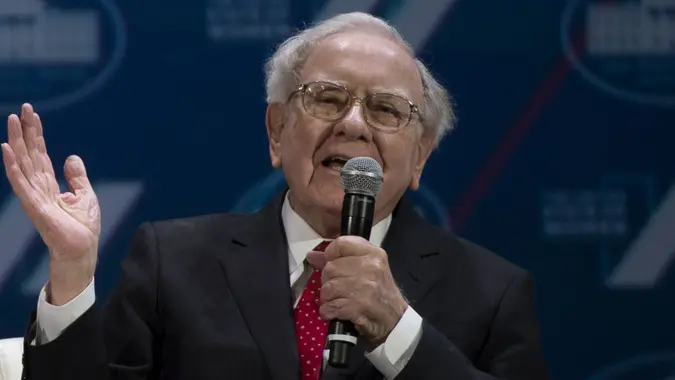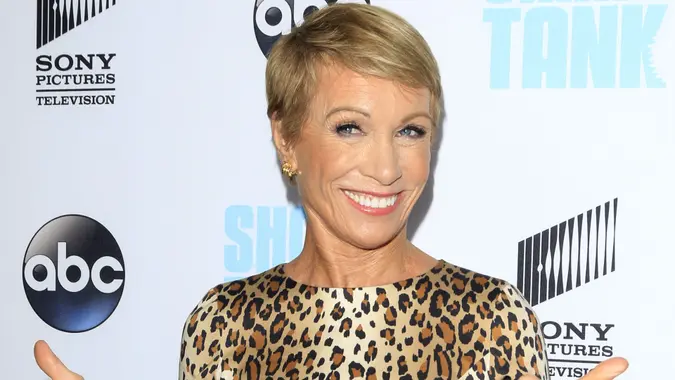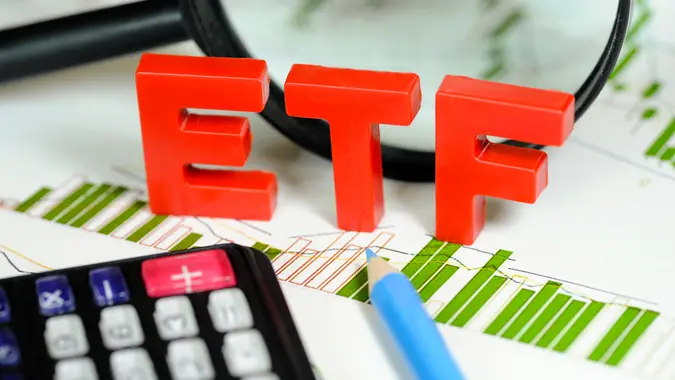3 Low-Cost Investments Under $100 for Retirees in 2025

Commitment to Our Readers
GOBankingRates' editorial team is committed to bringing you unbiased reviews and information. We use data-driven methodologies to evaluate financial products and services - our reviews and ratings are not influenced by advertisers. You can read more about our editorial guidelines and our products and services review methodology.

20 Years
Helping You Live Richer

Reviewed
by Experts

Trusted by
Millions of Readers
Retirees on a fixed income are often on a tight budget, so investing can seem daunting and unattainable. But the truth is there are low-cost options that don’t require deep pockets. There’s a misconception some believe that investing is only for the wealthy, but those in retirement can invest $100 or less and see a return.
You don’t need a lot of cash to build wealth, and there are safe bets that don’t feel like you’re gambling your money away. Here are three ways to invest as a retiree for under $100.
Also see five reasons boomers should continue investing in retirement.
Treasury I Bonds
Treasury bonds, also referred to as T-bonds, are a common way people invest. Essentially, you’re lending the U.S. government money. There’s typically a 20- to 30-year maturity period where you earn interest throughout, and depending on the type of bond, the interest rate varies.
For instance, the interest rate for I bonds changes every six months due to inflation, and according to Danny Ray, founder of PinnacleQuote, it’s one of the best ways for retirees to invest.
“Even starting with just $25 to $100 through TreasuryDirect.gov can begin building interest. You can invest up to $10,000 per year,” he said.
It’s a smart, strategic move because it’s safe due to the fact it’s backed by the U.S. government and inflation is taken into consideration with the interest.
“That’s a big deal when you’re on a fixed income,” Ray said. “Over time, they can beat savings account rates and keep your cash safe. Above all, they help protect your retirement nest egg from losing value without needing high risk.”
Index Funds
Index funds are a type of mutual fund or exchange-traded fund (ETF) designed to replicate the performance of a specific market index, such as the S&P 500, and they’re a great way to invest for retirees, according to Eric Mangold, CWS, founder of Argosy Wealth Management.
“There are numerous index funds that have no minimum to start to invest,” he said. “You literally could start with $50.”
An index fund can be a great part of a diversified portfolio or a good way to start building a diversified portfolio. “Investors can also look for no-minimum or low-minimum mutual funds to help round out their portfolio, which can help create a digestible risk profile for those who are retired,” Mangold said.
Dividend-Paying Stocks
Dividend stocks are shares of publicly traded companies that pay shareholders typically on a quarterly basis. Investing in dividend-paying stocks is a way to generate a consistent income stream during times when the market is rocky, and according to Ray, it is ideal for retirees.
“Above all, these types of stocks allow retirees to earn regular income without selling shares,” he said. “That can be a big deal when you’re trying to stretch your savings.”
And there are other benefits too. “For example, many well established companies like utilities, healthcare firms and consumer staples pay out consistent dividends. Some even increase those payouts over time, helping to keep up with inflation.”
Retirees can invest $100 or a few hundred dollars to get started using dividend-focused exchange-traded funds (ETFs) or direct stock purchases through DRIPs (dividend reinvestment plans), which often have low or no fees, per Ray.
Overall, dividend stocks can bring a balance of income and long-term value, especially for someone wanting their money to work without dipping into principal.
 Written by
Written by  Edited by
Edited by 

























